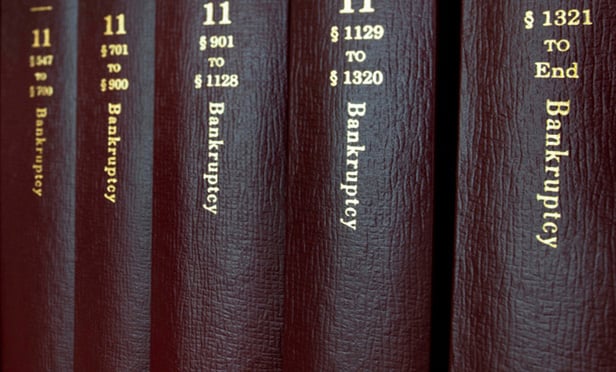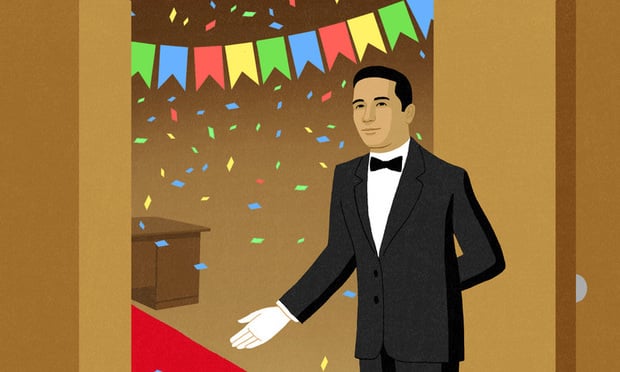Features

The Intellectual Property Strategist Is Going Digital Only. Here's What You Need to Know.
The final print edition of The Intellectual Property Strategist will be our January issue.
Features

Three Things Trustees Should Know About Due Diligence in Preference Litigation
Courts have struggled with the interpretation of the 2019 amendment to Section 547, specifically whether the due diligence requirement is an element of a preference claim that must be adequately pleaded in the plaintiff's complaint. While the law is still developing, there are three important takeaways for trustees to consider.
Features

Law Firms Embracing 'Hoteling' to Save On Office Lease Costs
While new to law firms, hoteling strategies are line with the practices of companies in other verticals where hoteling and 100% work flexibility have been successfully in place for some time.
Features

Keeping Track of Developments in Cases That Pit Creative Content Against AI Programs
2024 starts off with court decisions and procedural rulings that took shape in 2023 in lawsuits that were filed over the collision of creative content with generative AI programs. Most of the complaints allege copyright infringement and related claims prompted by the unlicensed copyright works that AI companies input into their AI programs.
Features

Split Second Circuit Narrows Bankruptcy Code's Settlement Payment Safe Harbor
The majority was sensibly concerned with the possible structuring of leveraged buyouts by artful counsel who would use a financial institution as a "mere conduit" to exploit the Code's safe harbor.
Features

The Benefits of Utilizing a Written Joint Defense Agreement Properly Tailored to Limit Future Conflicts
A recent decision from the U.S. District Court for the Southern District of Florida illustrates a benefit of utilizing a written joint defense agreement properly tailored to limit future conflicts, rather than relying on the oral agreements that are common among many practitioners.
Features

Start 2024 By Embracing the Synergy Between Retirements and Succession Planning
Attorneys retiring and succession planning are critical issues are often overlooked at the management level of law firms. A key question arises: What should come first, retirement or succession planning? Although they go hand in hand, many firms avoid addressing both.
Features

How Likely FTC's Comments On Copyright & AI May Become Policy
The FTC said that the misuse of training data like infringing on a work's copyright license is tantamount to unfair competition, thus implicating consumer protection with copyright policy and securing the agency's jurisdiction in the regulatory space.
Features

Distressed Real Estate Bankruptcies Continue, Despite Interest Rate Peak
Although interest rates may have peaked, we continue to expect a large volume of distressed real estate debtors to utilize the bankruptcy system over the next couple of years. This article analyzes two recent decisions regarding distressed real estate bankruptcies, both of which involve rights of real estate lenders against proceeds of collateral other than the real estate itself.
Features

Nurture Your Clients To Develop, and Deepen, Relationships
Business development is, first and foremost, about people and your relationships with these people. While marketing and visibility activities (speaking, writing, etc.) are critical, it's the people who ultimately make the hiring decisions. As a lawyer, while time is rarely on your side, developing your Nurture System will help you strengthen and deepen your important relationships in ways that are sustainable and effective.
Need Help?
- Prefer an IP authenticated environment? Request a transition or call 800-756-8993.
- Need other assistance? email Customer Service or call 1-877-256-2472.
MOST POPULAR STORIES
- The 'Sophisticated Insured' DefenseA majority of courts consider the <i>contra proferentem</i> doctrine to be a pillar of insurance law. The doctrine requires ambiguous terms in an insurance policy to be construed against the insurer and in favor of coverage for the insured. A prominent rationale behind the doctrine is that insurance policies are usually standard-form contracts drafted entirely by insurers.Read More ›
- The Brave New World of Cybersecurity Due Diligence in Mergers and Acquisitions: Pitfalls and OpportunitiesLike poorly-behaved school children, new technologies and intellectual property (IP) are increasingly disrupting the M&A establishment. Cybersecurity has become the latest disruptive newcomer to the M&A party.Read More ›
- A Lawyer's System for Active ReadingActive reading comprises many daily tasks lawyers engage in, including highlighting, annotating, note taking, comparing and searching texts. It demands more than flipping or turning pages.Read More ›
- Abandoned and Unused Cables: A Hidden Liability Under the 2002 National Electric CodeIn an effort to minimize the release of toxic gasses from cables in the event of fire, the 2002 version of the National Electric Code ("NEC"), promulgated by the National Fire Protection Association, sets forth new guidelines requiring that abandoned cables must be removed from buildings unless they are located in metal raceways or tagged "For Future Use." While the NEC is not, in itself, binding law, most jurisdictions in the United States adopt the NEC by reference in their state or local building and fire codes. Thus, noncompliance with the recent NEC guidelines will likely mean that a building is in violation of a building or fire code. If so, the building owner may also be in breach of agreements with tenants and lenders and may be jeopardizing its fire insurance coverage. Even in jurisdictions where the 2002 NEC has not been adopted, it may be argued that the guidelines represent the standard of reasonable care and could result in tort liability for the landlord if toxic gasses from abandoned cables are emitted in a fire. With these potential liabilities in mind, this article discusses: 1) how to address the abandoned wires and cables currently located within the risers, ceilings and other areas of properties, and 2) additional considerations in the placement and removal of telecommunications cables going forward.Read More ›
- The New York Uniform Commercial Code Comes of AgeParties in large non-consumer transactions with no connection whatsoever to New York often choose its law to govern their transactions, and New York statutes permit them to do so. What most people do not know is that the New York Uniform Commercial Code is outdated.Read More ›
